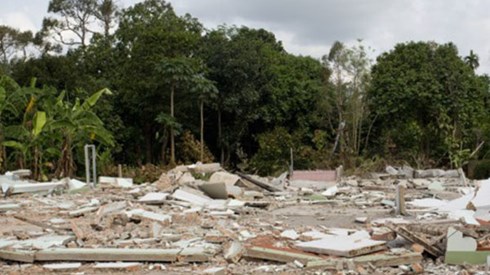RAA Offers Guidelines for Climate Change-Related Insurance Regulation

March 05, 2021

The Reinsurance Association of America (RAA) is urging policy makers to adopt guiding principles as they seek to address climate change and its interrelationship with insurance and regulation.
A statement from the RAA set out several principles that the association urged policy makers to adopt. They include the following.
- Regulation should not supplant management decision-making (e.g., underwriting, investment, and risk management). Each insurance entity is unique in its business model and the execution of it in the marketplace. Regulatory supervision should recognize that.
- Regulatory action should not be prescriptive. Regulators should focus on ensuring that insurers are evaluating future conditions as part of their risk management processes rather than on fixed metrics. For example, regulator involvement in the investment arena should focus on the ability of risk management processes to identify significant potential future investment impacts and be in no way granular.
- Rather than developing additional disclosure tools, regulators should use, assimilate, and recognize existing disclosure requirements and other climate tools—the National Association of Insurance Commissioners survey, Securities and Exchange Commission, Own Risk and Solvency Assessment, Task Force on Climate-related Financial Disclosure, CDP (formerly the Carbon Disclosure Project), or Climatewise—and not add layers of additional disclosures and requirements onto those already in use. Thoughtful, robust climate disclosures require significant insurer time and resource commitments. The ability to cross-reference or provide climate risk disclosure responses made in other contexts is important to avoid repetition and reduce unnecessary administrative burdens.
- Companies should be able to provide a single set of disclosures to all regulators or limit disclosures to a single regulator. Consistency is key.
- To the extent that a company is part of a corporate group, disclosures at the group level should be permitted for legal entities in the group. Coordination with international supervisors and other US regulatory bodies is encouraged.
- Stress tests and scenario analyses, if needed, should be conducted and evaluated at the group level, not the individual insurer or legal entity level.
- Due to the inherent problems involved with downscaling climate models and in predicting the timing and impact of future climate scenarios, particularly on a regional, state, or local geographic basis consistent with insurer business operations and state insurance regulation, the model output becomes more speculative. Accordingly, stress tests and scenario analyses should be conducted as a risk management exercise to identify climate issues, not as a solvency tool. It is important to recognize that climate scenario analyses are tools to help understand the long-term effects of climate-related risks on insurance and other financial markets and institutions. They are not the same as traditional stress tests, which have a short-term solvency focus.
"The RAA is committed to working with policymakers, regulators, and the scientific, academic, and business communities to assist in promoting awareness and understanding of the risks associated with climate change," Frank Nutter, RAA president, said in a statement.
March 05, 2021



